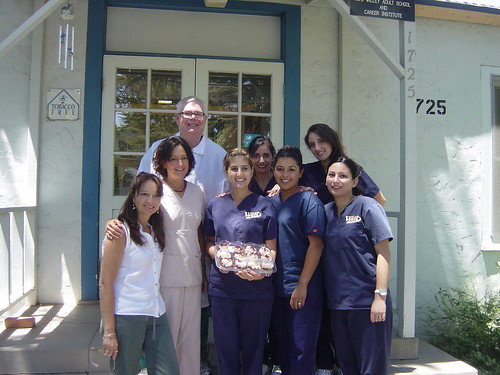
Good Morning!
On to today's dentistry and health headlines:
Studies support use of leaded glasses, thyroid collars
Significant reduction in dental cone beam computed tomography (CBCT) eye dose through the use of leaded glasses
Is Oral Sex to Blame for the Surge in Cancer of the Mouth and Throat?
Dentist admits using PAPER CLIPS in root canal procedure
On to today's dentistry and health headlines:
Studies support use of leaded glasses, thyroid collars
Leaded glasses and thyroid collars can effectively reduce patient exposure to radiation during cone-beam CT (CBCT) imaging without disturbing diagnostic image quality at several anatomic areas, including the alveolar processes, according to research presented at the American Academy of Oral and Maxillofacial Radiology (AAOMR) annual meeting in Chicago last month.
In a previous study, researchers from New York University, Stony Brook University, Columbia University, and Memorial Sloan-Kettering Cancer Center reported that the use of leaded glasses reduced radiation dose to the eye from a commercially available cone-beam CT system by 62% for a full field-of-view (FOV) scan and 38% for a collimated scan (Oral Surgery, Oral Medicine, Oral Pathology, Oral Radiology, and Endodontology, October 2011, Vol. 112:4, pp. 502-507).
Significant reduction in dental cone beam computed tomography (CBCT) eye dose through the use of leaded glasses
Objective
In light of the increased recognition of the potential for lens opacification after low-dose radiation exposures, we investigated the effect of leaded eyeglasses worn during dental cone-beam computerized tomography (CBCT) procedures on the radiation absorbed dose to the eye and suggest simple methods to reduce risk of radiation cataract development.
Study design
Dose measurements were conducted with the use of 3 anthropomorphic phantoms: male (Alderson radiation therapy phantom), female (CIRS), and juvenile male (CIRS). All exposures were performed on the same dental CBCT machine (Imtec, Ardmore, OK) using 2 different scanning techniques but with identical machine parameters (120 kVp, 3.8 mA, 7.8 s). Scans were performed with and without leaded glasses and repeated 3 times. All measurements were recorded using calibrated thermoluminescent dosimeters and optical luminescent dosimetry.
Results
Leaded glasses worn by adult and pediatric patients during CBCT scans may reduce radiation dose to the lens of the eye by as much as 67% (from 0.135 ± 0.004 mGy to 0.044 ± 0.002 mGy in pediatric patients).
Conclusions
Leaded glasses do not appear to have a deleterious effect on the image quality in the area of clinical significance for dental imaging.
Is Oral Sex to Blame for the Surge in Cancer of the Mouth and Throat?
Earlier this month, the American Cancer Society (ACS) released its annual Cancer Facts & Figures. The 2012 report includes some encouraging facts. Since 1990, the incidence of some common tumors including lung, colon, and prostate cancer has declined. Meanwhile, the rate of seven malignancies, like those of the lower mouth and throat linked to human papillomavirus (HPV), is increasing. The cause of this trend, which many assume is linked to people engaging in more oral sex, is not as straightforward as you might think.
Oropharyngeal cancers refer to tumors of the tonsils and rear tongue, back of the palate and posterior walls of the throat. Like their anatomical neighbors -- malignancies of the larynx, vocal cords, anterior and mid-tongue, other parts of the mouth and lips -- oropharyngeal cancers arise more often in people who drink and smoke heavily. These other head and neck cancers have waned in recent years, probably because North Americans are smoking fewer cigarettes and chewing less tobacco.
Dentist admits using PAPER CLIPS in root canal procedure
For some, going to the dentist is already an anxiety-inducing matter, but an appointment with this guy could have brought on potential health risks.
Michael Clair, 53, pleaded guilty Friday to a slew of accusations stemming from his substandard dental practice in Fall River, Massachusetts.
Among the charges are illegally prescribing prescription drugs, assault and battery, witness intimidation and conning Medicaid out of $130,000.
In addition, Clair is accused of trying to save a few bucks by using a paper clip instead of a stainless steel bar for a root canal procedure.
Using anything other than stainless steel puts patients at risk of pain and even infection.
Enjoy your morning!
No comments:
Post a Comment